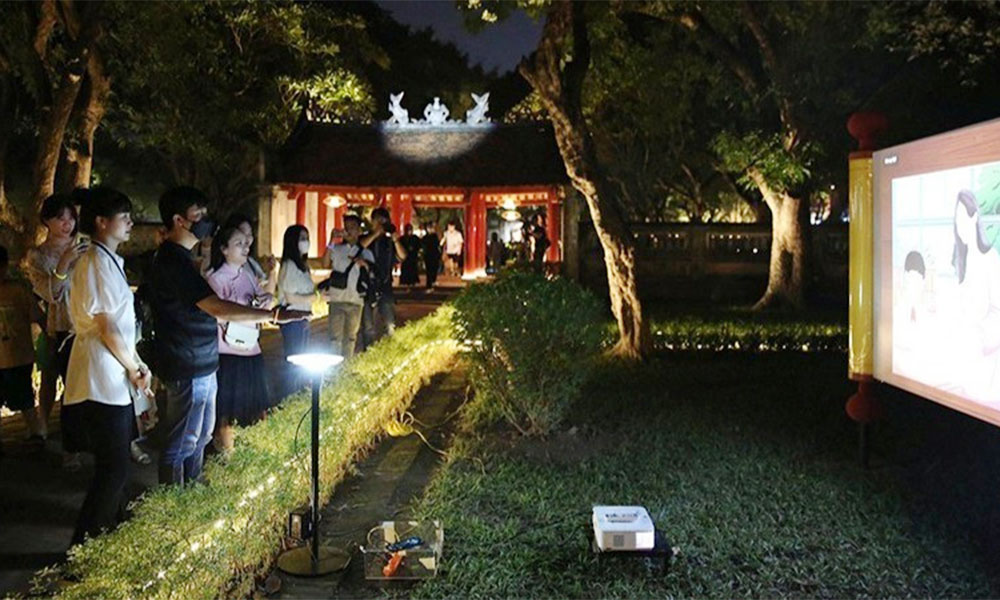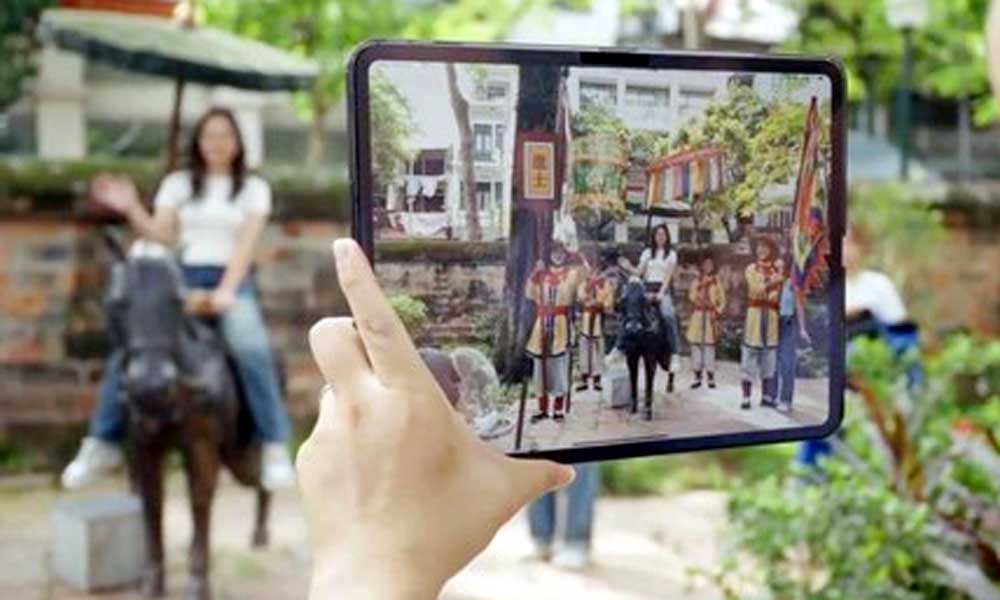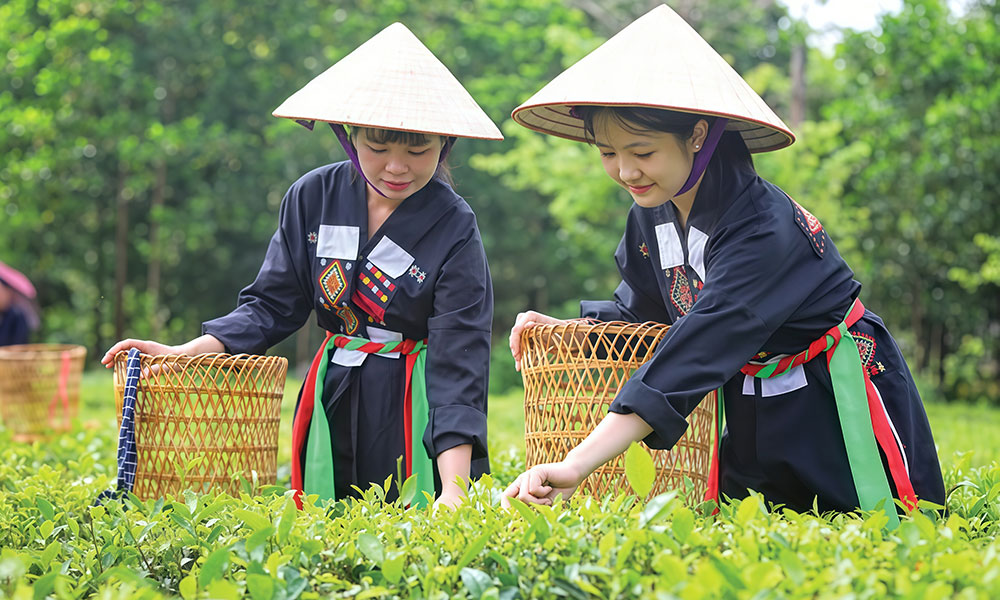Night tourism driven by cultural industries
When it comes to night tourism development, many Asian countries are one step ahead of Viet Nam. The appeal of these “cities that never sleep” has generated major economic value, while also helping to shape national brands on the global tourism map.
Recognising this direction as a potential “golden goose” for Viet Nam’s tourism-economy sector, the Prime Minister approved the night-time economy development scheme in mid-2020.
 |
|
Visitors take part in the “Temple of Literature – Quoc Tu Giam” night experience tour. |
In 2023, the Ministry of Culture, Sports and Tourism also issued the scheme entitled “Several Models for Night-Time Tourism Product Development”, outlining five core experience pillars: cultural-arts performances; sports, wellness and beauty care; shopping and entertainment; sightseeing; and gastronomy.
Thanks to this institutional groundwork, recent years have seen a wave of attractive night-tourism products taking shape across major destinations.
In Ha Noi, notable examples include the Hoan Kiem Lake walking street and night heritage exploration tours such as “Decoding the Imperial Citadel of Thang Long”, the “Tinh hoa dao hoc” tour at the Temple of Literature – Quoc Tu Giam, “Sacred Night at Hoa Lo Prison”, the “Thang Long – Ha Noi Night” cycling tour by bike, the sold-out real-scene performance “Tinh hoa Bac Bo”, as well as recent major live concerts that sparked massive demand.
In Hoi An, the ancient town dazzles at night with lantern-lit streets, folklore games, light festivals, and the large-scale outdoor show “Hoi An Memories”.
Meanwhile, Ho Chi Minh City charms visitors with the Nguyen Hue walking street, Ben Thanh night market, the backpacker district of Bui Vien, double-decker bus tours showcasing the city after dark, traditional-folk culture cruises along the Sai Gon River, and a dynamic network of street-arts spaces.
Phu Quoc has emerged as a glittering night destination with major productions such as “Tinh hoa Viet Nam” and “Kiss the Stars” laser-and-firework acts.
Beyond creating new highlights for domestic tourism, these experiences have acted as powerful “tourism magnets”, driving sharp revenue growth for host locations.
For instance, in 2024, Hoa Lo Prison relic welcomed 790,416 visitors — 1.73 times higher than in 2019 (the pre-Covid-19 period), while the Thang Long Imperial Citadel complex received 777,910 visitors — a 2.02-fold increase over 2019.
Notably, the most resonant products are those that place culture at their core. This serves as clear evidence of the catalytic role of night tourism plays for the cultural industries, by opening up new spaces that connect visitors and local communities with cultural, artistic and culinary offerings — enabling cultural values to come alive and supporting a more sustainable approach to heritage preservation.
Despite notable progress in recent years, night tourism development in Viet Nam remains below its true potential. Night-tourism products have emerged only in some big provinces and cities, while most other territories appear to be “asleep more than awake”.
The dominant operating models — chiefly night markets and pedestrian streets — look largely similar across locations, making it difficult to sustain long-term appeal.
Distinctive cultural offerings with clear local identities remain limited. Operational linkages are also weak, with few destinations delivering an integrated chain of night-time experiences. In several areas, services attached to historical heritage sites and traditional craft villages have failed to meet expectations.
This landscape calls for relevant authorities to adopt a comprehensive and well-structured development strategy, underpinned by breakthrough thinking, to create a strong impetus for night tourism and drive forward the cultural industries.
Tran Dang Khoa (Vinh Long Museum) suggests that future planning should focus on building themed creative ecosystems. For instance, instead of developing fragmented pedestrian routes, local authorities need to map out coordinated night districts anchored in distinctive cultural themes — such as street-arts quarters, premium gastronomy streets, or craft and creative retail hubs for artisanal products and innovative shopping experiences.
This approach not only enables clearer brand positioning and helps avoid duplication, but also fosters creative communities and enterprises with a shared vision.
In addition, destinations should create “multi-sensory cultural journeys by night” through the integration of augmented reality (AR) and virtual reality (VR) in tourism product design — enhancing visitor experience, opening up new revenue streams, and attracting younger traveller segments, while also reducing the physical strain on heritages and advancing more sustainable tourism.
Dr Nguyen Thi Thu Ha (the University of Transport Technology) emphasises that cultural asset exploitation must go hand-in-hand with cultural preservation and the safeguarding of inherent cultural identities.
Alongside restoration works and the conservation of architectural spaces and historical sites, provinces and cities should prioritise upgrading lighting systems, improving night-time mobility through services such as buses, electric trams and well-organised parking, while also developing dining precincts, shopping centres and arts-performance spaces rooted in traditional culture.
Overall, Dr Pham Thuy Quynh Nga (Interdisciplinary Sciences–Languages–Informatics Faculty, the National Academy of Public Administration and Public Governance) contends that Viet Nam should develop a localised strategy that links the cultural industries with night tourism development in each region.
The State should promptly issue a decree on the night-time economy, allowing pilot implementations of night districts and cultural-entertainment centres in territories with established tourism infrastructure and strong potential to attract international visitors, while rolling out short-term training in night-tourism service skills for the local workforce.
The subsequent phase should elevate night-tourism products into signature regional brands by strengthening ecosystem linkages among artists, creative enterprises, and tourism operators, with an eye towards cultural product exports.
 Bắc Ninh
Bắc Ninh








.jpg)



Reader's comments (0)